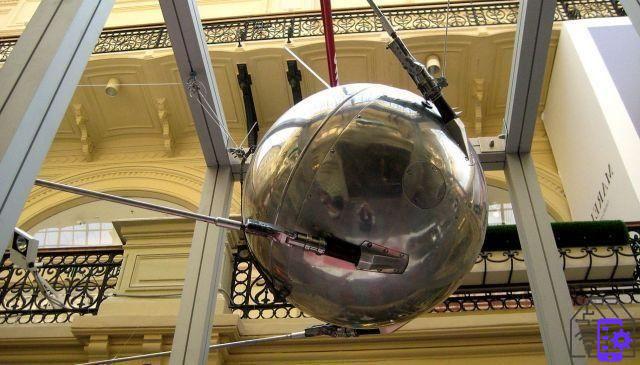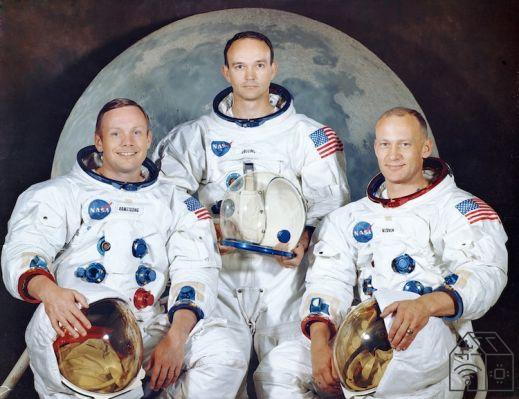
That man will one day conquer space, given the extension of the latter, we perceive it as a rather difficult undertaking. But that, more modestly, for some decades now man has been working hard to explore it (and in recent months also to visit it for tourism purposes) is undeniable.
So let's try to discover, in a short history, how space flights have changed since the launch of the first satellite to the latest habit of some of our wealthy contemporaries. Who prefer those beyond the earth's atmosphere to shopping trips.
But as always happens for this column, before seeing how space flights have changed, let's try to define them.
What are space flights
Space flights are the flights of vehicles, manned or unmanned, that cross the atmosphere of any celestial body (okay, in our case the Earth). They are therefore flights that are no longer based on the laws of aerodynamics but on the law of universal gravitation and on the principles of astrodynamics.
We are now ready to find out when space flights originated, and how they changed.

Towards the first space flight
Literature has always longed to know, through travels beyond our atmosphere, what happens among the stars. But it was only in the XNUMXs that people began to think concretely about the possibility of space flights using rockets. Eventuality that turns into a project with Robert Goddard, who invents the first liquid propellant rocket in history.
The first (unmanned) space flight
The first man-made object to reach outer space is the V2 rocket, conceived by the German naturalized American engineer Wernher Von Braun. The rocket, on June 20, 1944, crossed the Kármán Line (conventional boundary placed 100 meters above sea level, which divides the Earth's atmosphere from space). The V2 reaches an altitude of 174,6 kilometers, but it is a suborbital flight: that of a vehicle that has indeed passed our atmosphere, but which is unable to stay in space.
V2 will be followed by other launches, but the first pivotal date of space flights is October 4, 1957, when the Soviet Union sends Sputnik 1, the first artificial satellite, into orbit around the Earth. This, not surprisingly, is also the date from which the space age begins. Which will soon be called the space race, to underline a sort of challenge between the United States and the Soviet Union: if the official purpose was that of space exploration, the space race was also one of the symbols of the Cold War. Both superpowers wanted to show the other (and the world) their supremacy in the field of astronautics.
The first (manned) space flight
To understand how space flights have changed, we need to mark one of the two fundamental dates: April 12, 1961. It will be then that the Russian astronaut Yuri Gagarin will make the first suborbital flight of a human being.
The Americans will arrive shortly after: on May 5 of the same year it will be Alan Shepard's turn to enter suborbital space. While it will always be an American, John Glenn, who first completed three orbits around the Earth on February 20, 1962.
Man on the Moon
But the history of space flight certainly reached its symbolic climax with the Apollo 11 mission.
More than 500 million people have followed live from every corner of the planet the exploits of the pilot of the command module Michael Collins and of the pilot of the lunar module Buzz Aldrin. But above all the gesture of the mission commander, Neil Armstrong, who on 20 July 1969 was the first human to touch the lunar surface.
Missions to other planets and space stations
The first probes to Venus and Mars were sent by the Soviet Union in 1960.
Leaving aside for reasons of space (it seems a joke) the numerous subsequent shipments of probes and satellites, we remember the importance of the International Space Station, built starting in 1998. And which, as we reported in another article, will be decommissioned in 2031.
Discount Space stories. Successes and failures of the pioneers ...
Space stories. Successes and failures of the pioneers ...
- Battisti, Emiliano (Author)
The goal of bringing man to Mars and space tourism
Lately he has been holding the bank the visionary project by Elon Musk, which set up its SpaceX with the aim of taking humans to Mars.
In the meantime, the South African-born billionaire cannot be said to be wasting time. And, in the company of other tycoons like Jeff Bezos, he started what is called space tourism. Which allowed not only the very rich and a little eccentric entrepreneurs to overcome the Earth's orbit, but also to someone who, in a certain sense, already knew space: the captain Kirk of Start Trek. Or more exactly William Shatner, the actor who played the mythical character of the cult TV series.


























